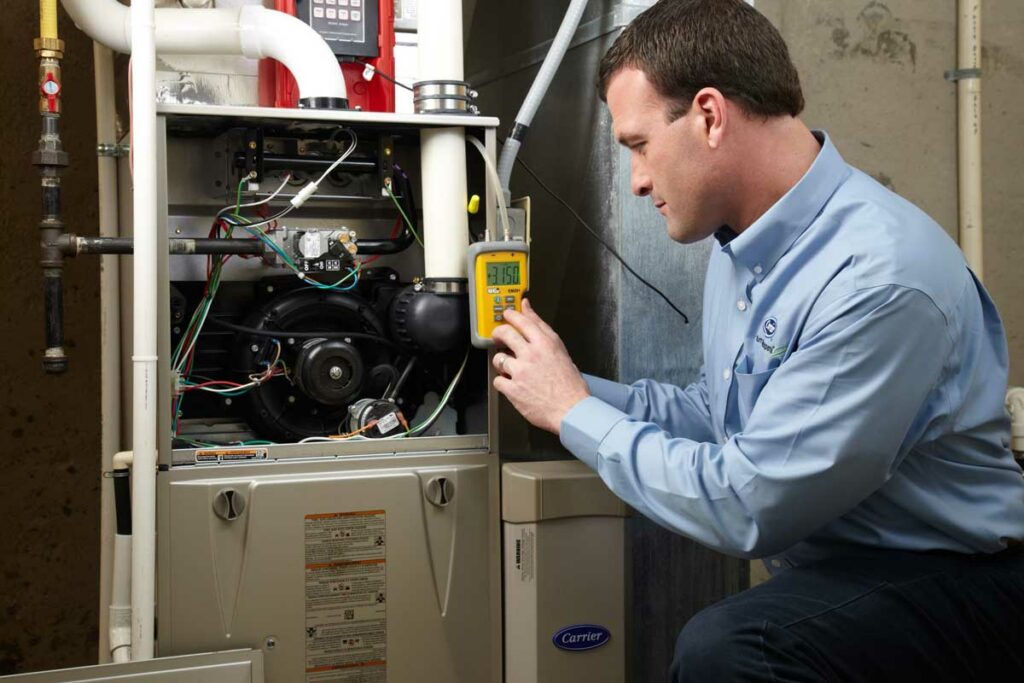
A common furnace problem we get Denver heating service calls for is that of a system that’s not blowing air out as powerfully as it should be or as it used to. Low or poor air flow is understandably a very frustrating problem, as it means you won’t be able to get comfortable this winter until it’s fixed.
Whether it’s your furnace or your air conditioner, low airflow problems are a pain and can be major red flags for a bigger breakdown later on. Keep reading for some common causes of low airflow so you know what to expect when we come out, then give the team at Bell Plumbing, Heating, Cooling, and Electrical a call for furnace repairs in Denver, CO.
Among the most common signs of an issue with your furnace is the reduced flow of air from the vents. It may not sound like much, but it’s usually the sign of a serious issue. The good news is, you can usually notice it simply by feeling for the flow of air from your vents, or trying a piece of ribbon to the vents and watching periodically to see if the flow of air has dropped. If it has, turn off the system and call in a repair service immediately.
Low airflow is typically caused by one of two things: something is either preventing the air from moving through your system, or there is a problem with the force pushing the air. However, there are many potential causes involves, and the last thing you should do is waste time guessing.
Low airflow means that the time it takes your furnace to warm your home is increased. Your furnace has to burn more fuel and raise your energy rates to do its job, and the added stress will be felt in individual components in the system too. You end up with an inefficient furnace or heater and higher energy bills.
If a blockage is causing the hot air to stay in your system, this elevates the temperature within the system and can cause damage. Most furnaces are equipped with an automatic shutdown feature to prevent this damage from happening, however that still leaves you without a functioning furnace.
Here are some of the root causes of low airflow and what you can do to resolve it quickly.
When was the last time you checked your air filter? wap out your filter first, before making a repair call. Replacing a dirty air filter can actually solve several HVAC problems.
Without a clean air filter in place, your system’s airflow will be blocked. It also forces your furnace to work harder than it needs to and compromises its efficiency. In most situations, your air filter should be changed every 1 to 3 months depending on the type and level of contaminants in your home.
If you’re using a heat pump instead of a furnace, your low air flow issues in your furnace could be due to a frozen evaporator coil. When it gets too cold, the condensation freezes. If it’s summertime, you may mistake this as a good sign that your heat pump is doing its job while its in cooling mode, but this isn’t ever something you want to see.
In many cases, a dirty air filter that restricts airflow could be the cause of a frozen evaporator coil. So again, your first step is checking your air filter! But regardless of what’s causing the frozen evaporator coil, it’s important that you not try to remove the ice yourself, as you can end up doing more harm than good to the system, and it doesn’t solve whatever the source of the problem is.
The air ducts of your furnace or heat pump are responsible for transferring conditioned air throughout your living space. If they aren’t in good shape, you’ll probably feel cold spots or weak airflow. A common reason for air duct problems? Leaks from issues like poor installation or tears and holes in the ductwork that happened over the years after ongoing use.
Short-cycling happens when your furnace or heat pump cycles on and off rapidly instead of at regular intervals of 2 to 3 times an hour. A number of things can cause this. For example, if your system is brand new, it probably means it’s actually too large for your home. But this isn’t necessarily the only cause. The best thing you can do if you notice your heater short-cycling is to give our pros a call ASAP.
Are you struggling with a chilly home or low airflow? Call the team at Bell Plumbing, Heating, Cooling, & Electrical to repair your furnace in Denver! We also offer ongoing heating maintenance in Denver, furnace replacements, and new installations. Contact us today for your heating needs!
We’re ready to answer your questions or schedule your appointment, call now or book online!
